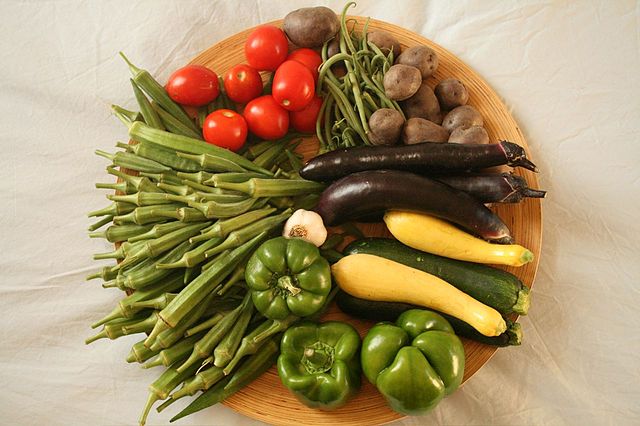Community-supported agriculture
Community-supported agriculture (CSA; sometimes known as community-shared agriculture) is an alternative, locally based economic model of agriculture and food distribution.

A CSA also refers to a particular network, or association of individuals, who have pledged to support one or more local farms, with growers and consumers sharing the risks and benefits of food production.
CSA allows city residents to have direct access to high quality, fresh produce grown locally by regional farmers.
How it works
When you become a member of a CSA, you’re purchasing a “share” of vegetables from a regional farmer. Weekly or bi-weekly, your farmer will deliver that share of
produce to a convenient drop-off location in your neighborhood.
The CSA system
CSAs generally focus on the production of high quality foods for a local community, often using organic or biodynamic farming methods, and a shared risk membership–marketing structure. This kind of farming operates with a much greater degree of involvement of consumers and other stakeholders than usual — resulting in a stronger consumer-producer relationship.The core design includes developing a cohesive consumer group that is willing to fund a whole season’s budget in order to get quality foods. The system has many variations on how the farm budget is supported by the consumers and how the producers then deliver the foods. CSA theory purports that the more a farm embraces whole-farm, whole-budget support, the more it can focus on quality and reduce the risk of food waste.
Structure
Community-supported agriculture farms in the United States today share three common characteristics: an emphasis on community and/or local produce, share or subscriptions sold prior to season, and weekly deliveries to members/subscribers. Though CSA operation varies from farm to farm and has evolved over time, these three characteristics have remained constant. The functioning of a CSA also relies on four practical arrangements: for farmers to know the needs of a community, for consumers to have the opportunity to express to farmers what their needs and financial limitations are, for commitments between farmers and consumers to be consciously established, and for farmers needs to be recognized.
From this base, four main types of CSAs have been developed:
Farmer managed: A farmer sets up and maintains a CSA, recruits subscribers, and controls management of the CSA.
Shareholder/subscriber: Local residents set up a CSA and hire a farmer to grow crops, shareholders/subscribers control most management.
Farmer cooperative: Multiple farmers develop a CSA program
Farmer-shareholder cooperative: Farmers and local residents set up and cooperatively manage a CSA.
In most original CSAs, a core group of members existed. This core group of members helped to make decisions about and run the CSA including marketing, distribution, administrative, and community organization functions.
CSAs with a core group of members are most profitable and successful. However, in 1999, 72 percent of CSAs did not have a core group of members. CSAs with a core group of members operate more successfully as a farmer-shareholder cooperative and CSAs without a group of core members rely much more on subscriptions and run most prominently as shareholder/subscriber CSAs.
source : justfood.org
wikipedia
No comments:
Post a Comment